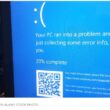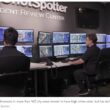Distance-to-fault: It’s not pass/fail
Bruce Holsted is, by his own description, “a tower dog.” His business, Holsted Corp., troubleshoots and repairs antennas and feed lines for a variety of wireless carrier, utility and government clients in Arkansas. With 15 years experience in the land mobile radio, or LMR, and wireless test and maintenance business, he has seen it all. Yet recent trends in site-test requirements have thrown a new challenge at Holsted — the quantitative distance-to-fault, or DTF, test.
The trend to specify a minimum level of performance in the transmission line DTF test concerns Holsted. He strongly believes it demonstrates a distinct misunderstanding of the nature of the DTF test — one that he believes is inherently qualitative rather than quantitative. “We ask at the front end about the customer’s testing specification, and if they demand a particular DTF figure with the antenna connected, then we generally don’t do the work. We just back out of it,” he said.
Although maturity and experience give Holsted and his team the flexibility to make such decisions, he points out that younger and more easily convinced radio frequency test and maintenance technicians are showing less fortitude.
“I have heard that one of the techniques [to meet the DTF pass/fail requirement] used by some young men is to start loosening the connectors until such time as they ‘pass’ that specification. This is absolutely insane,” Holsted said.
Perhaps more disturbing are suspicions that some carrier’s site construction representatives are encouraging site crews to use this technique, which Holsted believes is contrary to the purpose of the DTF test, which is to find possible problems with the cable/connector installation.
To fully understand the issues behind the DTF threshold debate, it is necessary to go back to basics and explore the very source and nature of the test — and its near cousin, the voltage standing wave ratio (VSWR) test.
The VSWR, or “return loss,” sweep test measures the ability of the entire transmission line (including jumpers, connectors and any other in-line elements) to deliver maximum power to and from the antenna with minimum signal distortion. Represented as a ratio comparing transmitted versus reflected voltage, the VSWR is a vital quantitative measure of the line’s impedance match, with the transmitter or receiver at one end, and the antenna at the other. It is a clear measure of the line’s ability to do what is intended: to transmit RF power or receive an RF signal.
Because the VSWR test response is frequency-dependant, the test is undertaken across a range of frequencies corresponding to the operational requirements of the installation. From this perspective, VSWR testing is purely frequency domain-based. The results are a plot of either return loss (measured in decibels, or dB) or VSWR, against the sweep frequency (see Figure 1).
DTF testing, on the other hand, is an inherently diagnostic test, and one that is measured in the time — rather than frequency — domain.
“It works on the same principle as radar,” said Charlie Spellman, applications engineering manager with the wireless technology group of Radio Frequency Systems. “The earliest time domain reflectometer (TDR) testers output a step, or pulse, into the cable. When the pulse encountered a discontinuity, some of the signal was reflected back. The amount of time it takes for the signal to return can be converted to distance along the line and provides an approximate location of the reflection point.”
Discontinuities that can cause significant reflections include damaged cable, improperly installed connectors, improperly mated connectors or water ingress. The shape and nature of the DTF pulse response plotted against line distance (Figure 2) can provide a valuable transmission line fault diagnostic.
“When a high VSWR is encountered, a DTF test can provide valuable information to help locate the source of the high VSWR,” Spellman said. “This avoids randomly changing out components to find the fault.”
The DTF test also can provide a valuable “birth record” for the transmission line, enabling maintenance crews to compare the line’s current performance with that achieved at its initial commissioning.
Advances in the data processing power of site instrumentation have permitted the two test procedures — VSWR and DTF — to be combined into a single frequency-domain-based test instrument, according to Spellman.
“The modern network analyzer uses frequency-domain reflectometry to actually simulate the time-domain DTF test,” he said. “The basis is a mathematical function called the inverse fast Fourier transform.”
The principle of the inverse fast Fourier transform is to combine a set of sinusoids to produce an approximation to a pulse train (Figure 3 on page 30). In short, this allows the modern network analyzer to use the data obtained during a return-loss or VSWR sweep test to “back calculate” the transmission line’s time-domain DTF response.
The on-the-ground procedure for the VSWR sweep test is fairly straightforward and well understood.
“What you see in the VSWR test is a functional check of the entire transmission system as it shall be operated in its later life,” said Gerhard Wunder, Radio Frequency System’s global product manager of transmission lines. “We recommend first visually checking the installation for any abnormalities. Then we recommend sweeping across the frequency band that the installation is supposed to operate at, and observe that reflected power is within specification. It’s a highly repeatable test.”
According to Wunder, the line’s return loss — with a 50 ohm standard load put in place of the antenna — typically would be better than 23 dB, depending on the length of the line. “If we don’t achieve these minimums, then we VSWR-test the line in sections to isolate the problem,” he said.
Holsted agrees with this approach. “We first generally check for tightness on the cable connectors and for presence of moisture,” he said. “Then we disconnect the antenna and any tower-top amplifiers, and then prove [via VSWR] the feed line. We then put an RF series adaptor in between the jumpers and prove the antenna. If everything checks good, then we’ve got a good antenna network.”
While the all-in-one site-network analyzer is convenient, it is important to recognize the limitations of quantified DTF test results obtained — particularly the erroneous application of the pass/fail threshold, Wunder said.
“There are a number of parameters that impact on the quantitative results that come out of a modern DTF test,” he said. “From this point of view, it is illogical and simplistic to apply a site-wide DTF performance threshold.”
One such parameter is the length of the cable itself, which will impact the value of the DTF reading. “The frequency-domain instrument is limited in the bandwidth sweep it can perform over longer cables,” he said. “The longer the cable, the narrower the sweep bandwidth.”
This bandwidth reduction also reduces the resolution of the instrument and diminishes its ability to resolve closely spaced reflections, according to Wunder. “If you enter a center frequency and length of cable into the analyzer, the instrument auto-corrects the DTF test bandwidth to suit its capability. This means that transmission lines of identical diameter and installation quality, but of different lengths, can produce quite different DTF results,” he said.
It is important to note that the DTF is not being directly measured, but calculated, so what is shown is an estimate of the average return loss over the frequency range being swept, Wunder said.
“This really explains the ‘non-repeatable’ nature of DTF,” he said. “It is this inherent calculated and averaged nature of the DTF test that can result in dramatic differences in the measurements taken just by varying test conditions such as test bandwidth or cable length.”
Spellman points out that one of the most tedious aspects of the test process is the somewhat arbitrary selection of the DTF threshold. A number of carriers are applying a DTF measure that can be difficult to achieve with the specified transmission line components, he said.
“The cable connectors might be specified at 30 dB. Now our connectors generally perform better than spec, so an average connector DTF performance level might be say, 36 dB,” Spellman said. “The problem is that some carriers are taking this performance level of 36 dB and applying it as a blanket threshold.”
He noted that gaining another 1 dB or 2 dB of DTF performance at such a low level has little or no impact on overall system performance.
He cited as an example a recent experience with an installation in New Jersey, where he and his team were asked to view a number of connections that apparently were failing the DTF performance test.
“The site DTF threshold specification was 34 dB or better, so the installation crews were cutting these connectors and changing them out,” he says. “When they opened the ‘failed’ connectors, they found they were perfect — nothing was done wrong, and they looked great.”
Under Spellman’s instructions, a DTF sweep of all transmission lines on the site demonstrated the true purpose and value of the test. “The connectors were all running at the same sort of level — between 32 and 34 dB,” he said. “Then we hit one running at 26 dB. When we opened it up, the flare inside the connector was bent over and crushed. That’s what the DTF test is supposed to be used for.”
Holsted isn’t shy about expressing his views on the current trend to specify minimum DTF performance thresholds. “This is the bane of the industry right now,” he said. “Why they establish this DTF threshold is beyond me — I don’t know whose idea that was. It’s just ignorance.”
Spellman emphasized that the DTF test has a vital diagnostic role to play but that it is misused when a threshold is simplistically applied as a pass/fail criteria. “The threshold should not be a pass/fail requirement but one that triggers an investigation into whether connectors are properly installed or if there is cable damage,” he said.
Wunder concurred, emphasizing the costs associated with the misuse and misinterpretation of the DTF test results. “These DTF pass/fail thresholds really have site-testing crews out there chasing ghosts, trying to achieve DTF values that are impossible or unachievable,” he said.
Holsted cited the “push-button” nature of the modern network analyzer as the root cause of some of this ignorance, that it simply is too easy to achieve what appears to be an accurate plot of DTF versus line length at the push of a button.
Holsted suggested that technicians go back to basics to truly understand the test being executed.
“I grew up in the industry with a simple in-line wattmeter,” he said. “So I’m used to measuring forward and reverse power, then calculating VSWR — that’s the way I approach it and understand it. It’s a shame there isn’t more of this level of understanding today.”
David Kiesling is director of marketing and technical services with the Wireless Technology Group of Radio Frequency Systems

















